Oleh Ivashchenko, Foreign Intelligence Chief of Ukraine: russia will be technically ready for a new aggression – against Europe – in 2–4 years after the war
5/26/2025

The Foreign Intelligence Service has been, traditionally, considered political and economic intelligence, its key mission being to inform top country leaders about the intentions of foreign policy players.
The full-scale war has changed course of things for the special service
In March last year, President Zelensky appointed Oleh Ivashchenko, a career military intelligence officer with significant combat experience and a long career in the Main Intelligence Directorate of the Ministry of Defense (HUR), to lead the Foreign Intelligence Service of Ukraine (FISU). He served in an elite special officer unit, known as Unit 2245, and participated in special operations that are still classified.
During the past nine years, Mr. Ivashchenko, before being appointed to the Foreign Intelligence Service, served as senior deputy chief of the HUR while serving simultaneously as Deputy Chief of the General Staff of the Armed Forces of Ukraine for Intelligence, and later as an Assistant Commander-in-Chief of the Armed Forces of Ukraine, also for intelligence affairs.
“When working within the General Staff, I reported intelligence information to the Chief of the General Staff and the Minister of Defense on a daily basis, and assisted in the development of threat assessment reports insofar as it related to defense planning,” Ivashchenko says about this period in his career.
Given the military background of the new leader, it is no surprise the first combat units that perform tasks on the frontlines have been incorporated into the FISU. In this regard, the FISU and the HUR have now become somewhat similar to each other, Ivashchenko admits in a conversation with Ukrinform: “We are more focused on foreign and economic intelligence, while the HUR deals with defense intelligence affairs. But today everything has become so tightly intertwined that whoever has more capabilities gets the job done.
In his first interview since the full-scale invasion began, the FISU chief told Ukrinform about Russia's strategic plans for Ukraine, its economic and military capabilities, mobilization resources, and spoke in detail about the assistance in the war provided to Russia by its allies - the DPRK, Belarus, and China.
Furthermore to this, Mr. Ivashchenko answered questions about whether Russia has an intention of attacking NATO countries, about the operations Russia’s private military companies are conducting in Africa, and about the new training system for intelligence officers being implemented in Ukraine.
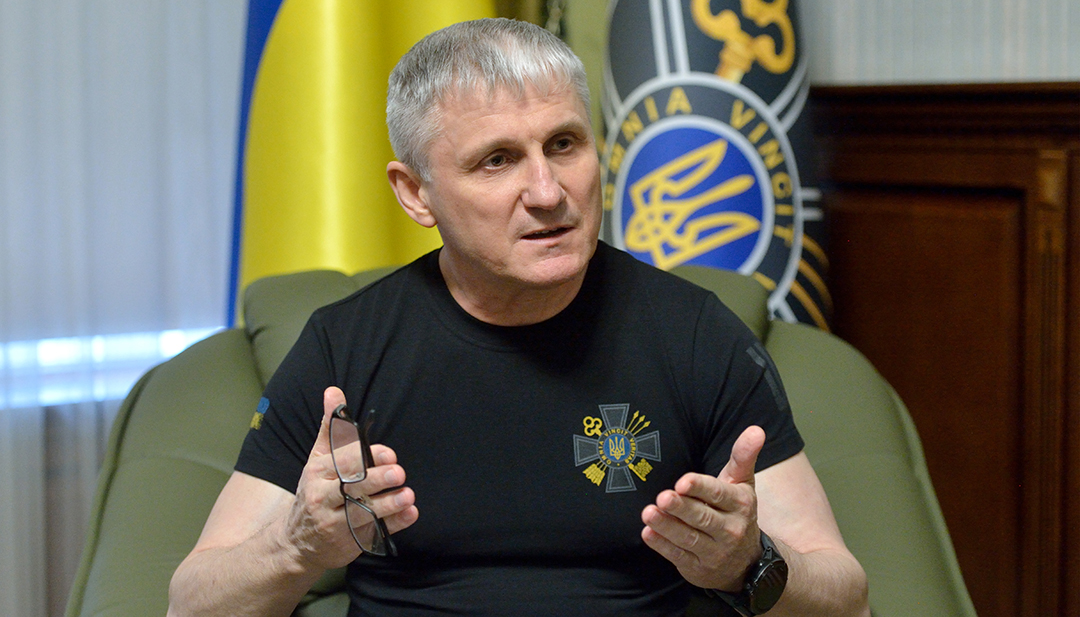
RUSSIA IS WANTING TO BUY TIME TO REORGANIZE ITS FORCES
- Mr. Oleh, statements about the desire for peace have recently been increasingly heard in the public square. Does FISU have information about the Kremlin's intentions regarding a ceasefire?
- Russia's strategic plans for Ukraine remain unchanged, and this is gaining full control over our territory. But a mere desire does not amount to the ability. They are exhausted - technologically, economically, and diplomatically. Basically, Russia's long-term goal is to establish control over the countries of the former Soviet Union.
– What are their plans for the battlefield?
– Most Ukrainian experts would agree that these plans are nothing new, which is to win full control over the Luhansk, Donetsk, Zaporizhzhia and Kherson regions. But they have no ability to execute their plan to full extent. Statements about “squeezing” our forces out from the border regions are far off the mark. On the contrary, we are in control of several positions on the territory of Russia, in particular in the Kursk region and in the Belgorod region.
They as well want to create what they refer to as “security zone” on the territory of the Kharkiv, Sumy, and Chernihiv regions. However, they no longer have the same resources anymore. While previously they used to dream of a 30-kilometer-deep buffer zone, this has now reduced to 5-10 kilometers.
– It follows from what you’ve said that these four Ukrainian regions are the minimum to be reached before they would be ready to enter the peace process?
– Their logic is simple enough: they are wanting to buy time to reorganize themselves. But no one gives guarantees that this will be peace. Rather, this will be the next phase in their preparation for a new attack. They are bargaining because they are tired. They have neither sufficient human resources, nor equipment or time.
We, on the contrary, aspire for a long-lasting peace. The President, all of Ukrainian government and defense and security agencies are working on increasing pressure [on Russia] by imposing new sanctions and restrictions on its oil and gas exports. Because each of their oil tankers is a dollar that they have earned somewhere else. It is clear to us that Ukraine did and will retain ownership of the lands enshrined in our Constitution, the lands that are recognized as ours by international law. This is not up for debate.
- Let's talk about Russia's capabilities to wage war. First of all, how does FISU view the state of the Russian economy?
- Before the full-fledge invasion began in 2022, total assets of the Russian National Welfare Fund amounted to approximately USD150 billion. Now this has shrunk to only USD 38 billion or so. The money is running out. They also have illiquid reserves in the form of securities. These securities are currently unsellable.
Previously they had 2,300 tons of gold in reserve, now there have been left only 1,700 tons. They are selling it out. Previously they held 164 billion Chinese yuan in reserve. These reserves are as well shrinking little by little. Over the first three months of this year, Russia’s war expenditure amounted to USD 5 billion. The implications of this are quite serious for its economy.
– How long can Russia pay war bills?
– We are expecting severe problems to emerge in the Russian economy by the end of this year, problems with the availability of money and labor resources. This can be further exacerbated by crises in the sectors of energy, housing and public utilities, along with a shortage of personnel.
– How will this affect the population in Russia?
– It has already affected them. In today’s Russian Federation, those willing to earn money have to join the army ranks. Just sign a contract and be entitled to a USD 30-40,000 sing-up bonus, depending on the region. New recruits are being paid by the central government, local authorities and businesses. People are being encouraged to sign up.
This scheme looks appealing to the Russians at first glance, but in fact it is too expensive for Russia to sustain. Current data available to us suggests that the kremlin is seeking to avoid the payments, and so the backlog of sign-up bonuses is mounting up.
Thus, by the way, foreigners are joining the ranks of the Russian army. They are promised citizenship, money, some other incentives...
Local authorities see they have problems with labor resources, and it is better for them to recruit foreigners, who are aplenty, and put a tick mark suggesting that such and such a region has reached the recruitment target. This is how they retain employees at local industrial enterprises.
– Does the intelligence have data on their population numbers, their mobilization resource?
– There are approximately 145 million people living in Russia. The mobilization resource amounts to 25 million people, those who have appropriate military specialties or the ones related to military affairs. These are the labor resources that drive the economy forward. But in actual fact, however, only three million of them have adequate training levels. Over the time of the all-out invasion, 1.3 million people have been mobilized for war, while the number of killed and wounded casualties is approaching one million.
– How are things going on with armaments production in Russia?
– They are trying to achieve the maximum, but it is difficult for them to do. This takes investments, tooling machines, components, but this all is in short supply. They have difficulties with the production of electronic components and special chemical products.
As things are now, 80 percent of their military equipment inventory is comprised of outdated models with lower characteristics. This equipment has been removed from storage warehouses, brough back to operational status and sent to the battlefield. Only 20 percent of Russian equipment inventory is made up of new generation systems.
If we take ammunition, for example, they put out some three million rounds of 122-mm and 152-mm caliber every year, plus 2.5-3 million imported from the DPRK. Since the beginning of the war, six million rounds of ammunition have been imported from out there. The DPRK additionally supplied 120x 170-mm M1989 Koksan self-propelled artillery guns and as many 240-mm M1991 multiple launch rocket systems.
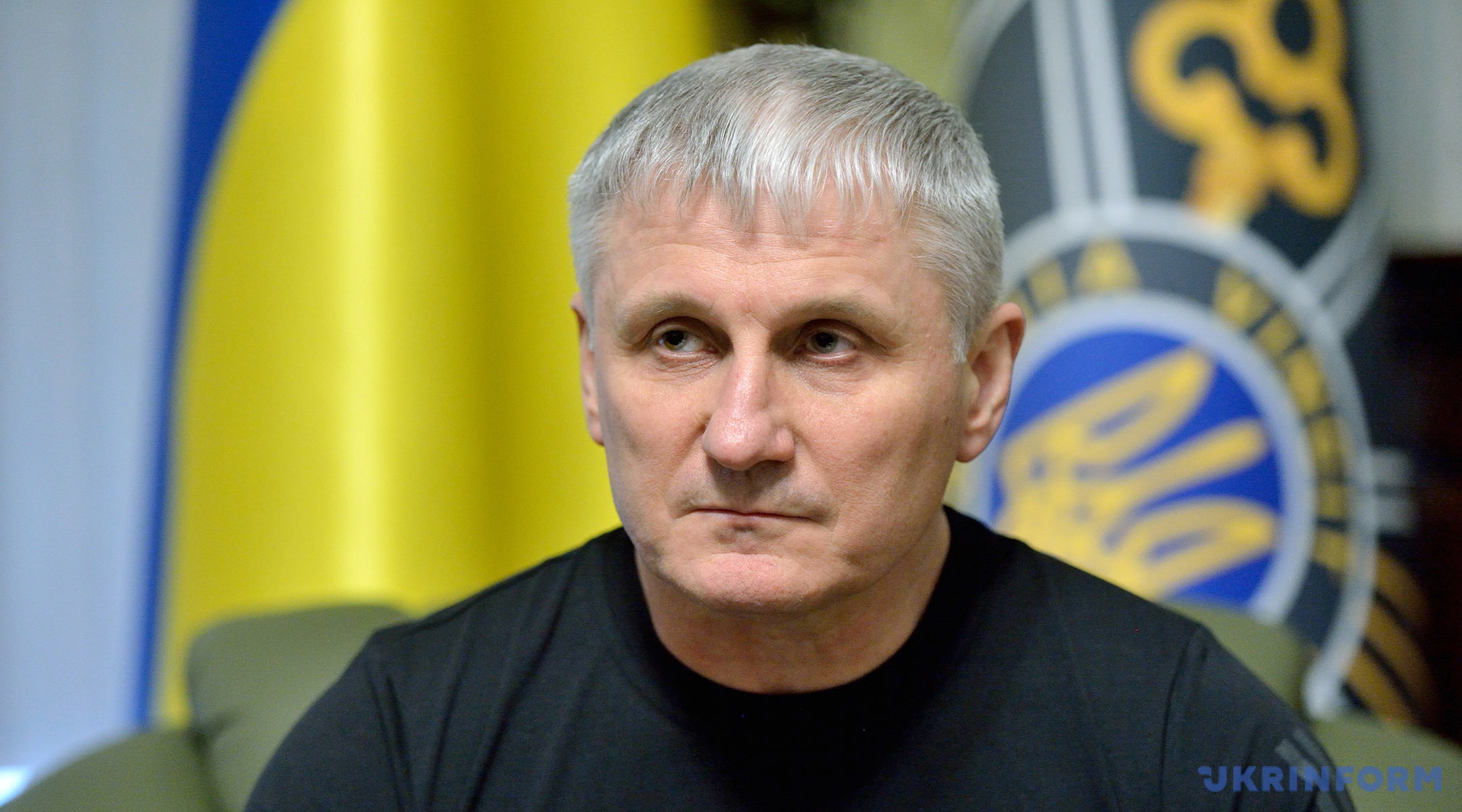
– What do the Russians pay North Korea with?
– They transfer them rocket and spacecraft technologies. We do not discount the possibility that these may also include technologies related to nuclear weapons or their improvement.
We know that North Korea has begun supplying Russia with specialists with appropriate background for work in the defense-industrial sector, in particular, in the aircraft industry.
The DPRK also supplies labor for agriculture, construction of houses and highways. Pyongyang sent 13.800 its workers to Russia last year.
– Are the North Koreans engaged in hostilities directly on Ukraine’s territory?
– They are deployed in the Kursk region. We have not recorded their presence in occupied Ukrainian territories yet, but their artillery has already turned up on the Kherson front among other directions.
– In April, the President reported that 155 Chinese mercenaries were fighting for Russia in Ukraine war, and added that there may be more of them. Two of them who were taken captive by Ukrainian soldiers swore it was their independent decision to go to war in Ukraine. Did China directly authorize its citizens to fight on behalf of the Russian military? Is there intelligence suggesting that the Chinese, just like the North Koreans, are here to adopt the experience of modern warfare from the Russians?
- In each country, special services are solving particular tasks, and we cannot rule out that these were representatives [of special services] who are adopting the experience of modern warfare.
We are aware of the Russians sharing their experience with the Chinese, with joint military maneuvers being conducted as part of military-to-military cooperation, at the staff level, at the level of planning. The Chinese are also being invited to take part in collaborative Russo-Belarusian military maneuvers that are scheduled to be held at military training grounds in Belarus and Russia. It is during these international military cooperation events where experience is being shared.
Generally speaking, the Chinese are aplenty in Russia, likewise representatives of other ethnicities, in particular Central Asian ones. All in all, there are approximately six million foreigners temporarily staying in Russia. These are those who came in search of job opportunities, as well as students from Asian and African countries. And they, like every foreigner in Russia, could well end up in the ranks of the Russian Armed Forces after committing minor administrative offences or lured by monetary reward, we do not rule out this possibility.
- President Zelensky in mid-April reported intelligence about China exporting artillery systems and gunpowder to the Russian Federation. He also said that Chinese representatives are “engaged in the production of some weapons products” on Russian territory. Is it known what kind of products these are?
– True, information has emerged, suggesting that China supplies tooling machines, special chemical products, gunpowder, and components specifically to defense manufacturing industries. We have confirmed data on 20 Russian factories. In 2024–2025, at least five facts of the aircraft industry cooperation with the PRC had been recorded, involving equipment, components, replacement parts, and engineering documentation, and there have been found facts of major supplies of special chemical products.
As of early 2025, 80 percent of critical electronic components found in Russian drones originated in China. At the same time, there are facts of product substitutions, deceptive product names, there are shell companies through which everything necessary for the production of microelectronics is supplied.
THE BELARUSIAN ARMY IS INCAPABLE OF CONDUCTING LARGE-SCALE CAMPAIGNS
– Are there grounds to say that the military exercise to be held jointly by Belarus and Russia this Fall can outgrow into a new offensive from the north?
– We have all the relevant information regarding these exercises. Russia has already sent out some four dozen invitations to military representatives of other countries. They are wanting to make an international event out of this.
According to the exercise scenario, there will be simulated an operational episode of the confrontation between two coalitions of allied countries -- one led by Russia and the other by notional West. It is pretty clear who this is about. These are the countries that currently support Ukraine. Our European partners.
– There are lots of expert opinions suggesting that Russia, under the disguise of these military exercises, can attack the Suwałki Gap, or the Baltic countries or Poland. How realistic is this scenario?
– I remember year 2015 when I was appointed senior vice chief of the HUR – second in command to the Chief of General Staff. Since then, game plans for literally every Russo-Belarusian exercise involved establishing control over the Suwałki Gap. This is not a fantasy, but rather a part of their strategic scenarios.
They are always working out a scenario where Kaliningrad comes under threat, NATO can seize control of that region, or a “color revolution” of some kind can happen in Belarus. And then Russia “comes to the rescue” – that is, deploys its forces. Such is the scenario. It’s for this purpose they trained their 1st Tank Army and the 20th Combined Arms Army. These forces, according to the plan, are supposed to reach Kaliningrad through the Suwałki Gap. Needless to say, this situation would create a direct threat to the Baltic countries.
– What is the situation like in Belarus? Can we expect a threat coming from this particular direction?
– The Belarusian army in its current state is not capable of conduction large-scale campaigns. Everything they have deployed near our border is as few as two thousand troops just to distract us.
That is, this combat deployment is small; before the war, it was unable to conduct offensive operations, and their soldiers are not prepared for this morally.
Many of the Belarusian military commanders got their education in Russia. Back in 2022, they were pressuring Lukashenko into joining the war. But the Belarusians themselves – both military and civilians – do not want this to happen. What needs to be also kept in mind is that the Belarusian economy is currently fully dependent on the Russian Federation.
When Russia, who planned to complete this war “in three days,” began facing a shortage of armaments in 2022, Belarus transferred it everything it could from its storage warehouses: ammunition, armored equipment, including T-72 tanks and BMP-2 infantry fighting vehicles, as well as sighting systems, body armor, helmets, and tooling machines. They have now launched production lines for the ammunition products required by Russia. Rockets, barrel-launched rounds - everything that is needed in war. The Belarusian military-industrial sector has turned into a supplement to the Russian one. About 80 percent of Belarusian defense industries are integrated into the Russian defense-industrial sector. This is actually one industrial base.
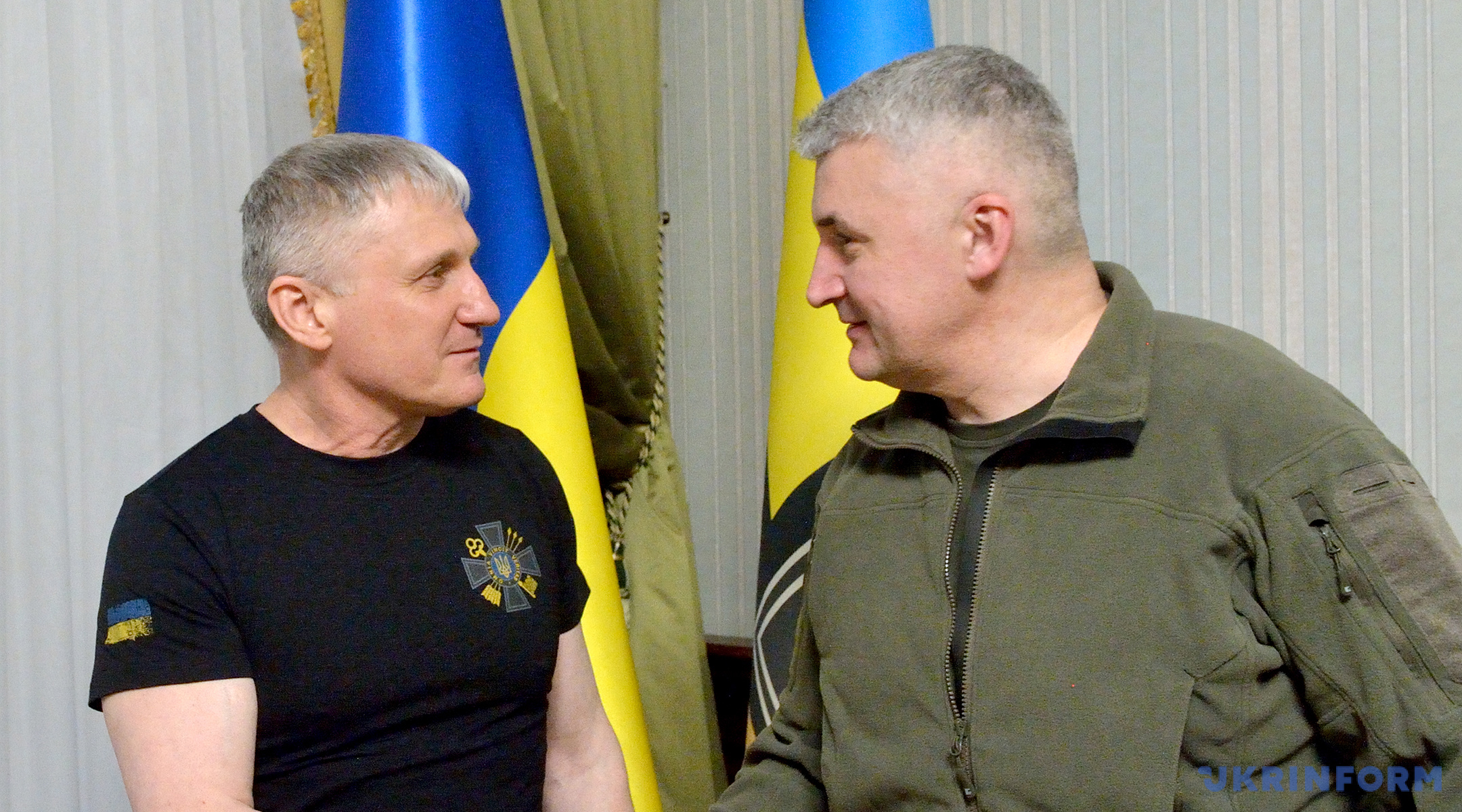
– Has Russia transferred nuclear weapons to Belarus?
– Nuclear weapons carriers are deployed out there. That’s a true fact. There are deployed airplanes, Iskander missiles. But there are no nuclear weapons deployed in Belarus. That’s a proven fact.
– So it turns out that there are carriers, but there are no warheads?
– Absolutely so. None. They are furnishing storage facilities, preparing themselves, building. Lukashenko says that they will have an Oreshnik [intermediate-range ballistic missile system] deployed by the end of the year. But this is more like wishful thinking. For now, they have nothing like that and are unlikely to have.
– Belarus saw popular protests during the previous presidential elections [in 2020]. What is the public mood like in Belarus now?
– Lukashenko is holding on, keeping control of the situation solely with the help of the special services, through the intimidation of people. The opposition is either repressed or staying abroad. Such is the reality in Belarus, which, unfortunately, has not changed.
POLAND, BALTIC COUNTRIES, NORTHERN EUROPE ARE AT RISK
– How is cooperation developing between the FISU and leading intelligence services? Have there been any contacts since the change of government in Washington – with intelligence services and others?
– We maintain good working relations with heads of multiple leading intelligence agencies, including in the USA. We intercommunicate, solve common issues for the benefit of our countries. There is support from their side, provided in the form of intelligence and assistance in various aspects related to arming and providing logistical support to our Defense Forces.
– Does the FISU conduct special operations jointly with foreign intelligence services?
– No one will answer this question, but if it were part of a questionnaire where you need to check a box, then imagine I’ve checked it (smiles - ed.).
– How have the defense and security forces of NATO countries and the intelligence community changed after February 2022? Are they prepared for a real war with an adversary like Russia?
– The situation has changed dramatically. Both politicians and NATO military currently assess risks differently. Countries are reviewing their strategic plans, and defense budgets are growing. Those who used to spend 0.3 - 0.5 percent of GDP on defense are now spending nearly 2 percent, and some even 5 percent. Whenever we meet with intelligence representatives from partner countries, they ask us to tell about how we were preparing for war, how it began, what the first intelligence operations were like, how our management systems worked, how we managed to enhance our capabilities. And I see that they are learning, reviewing their vision and restructuring their intelligence systems.
– The president of Germany's Foreign Intelligence Service (BND) Bruno Kahl warned in March that the kind of swift end to the war that Trump is seeking would "enable the Russians to focus their energy against Europe." The earlier the war ends, the earlier Russia can launch an aggression against Europe. Would you comment on such predictions?
- I personally have great respect for Bruno Kahl, the experienced chief of the BND, and for all our German colleagues as a whole. We are very attentive to their assessments and check them with ours.
Mr. Kahl said honestly: Ukraine is not just a country fighting for own self-preservation. We are the shield of Europe. And as long as we are containing this invasion, other countries have time to prepare.
Russia’s plans have not changed. They want to have full control over Ukraine, have influence over former Soviet Union countries. But it is no longer just a possibility but a matter of time as to who will be next. Poland, the Baltic countries, and Northern Europe are at risk. Our analysts no longer have doubts about whether Russia will be bold enough to attack other countries or not. The question is different: when and from where?
According to our expectations, which are shared by our European colleagues, after the end of hostilities, it will take from two to four years for Russia to regenerate its combat capability. If the sanctions are lifted, the military modernization process [in Russia] will gain momentum.
In other words, two to four years will pass after the war comes to an end, and Russia will be technically and technologically ready for a new aggression – that time around against Europe.
And now we all are watching their hybrid game aimed to divide allies, achieve a reduction in support for Ukraine, influence decision making through Hungary. This is the political aspect to the war. We understand this.
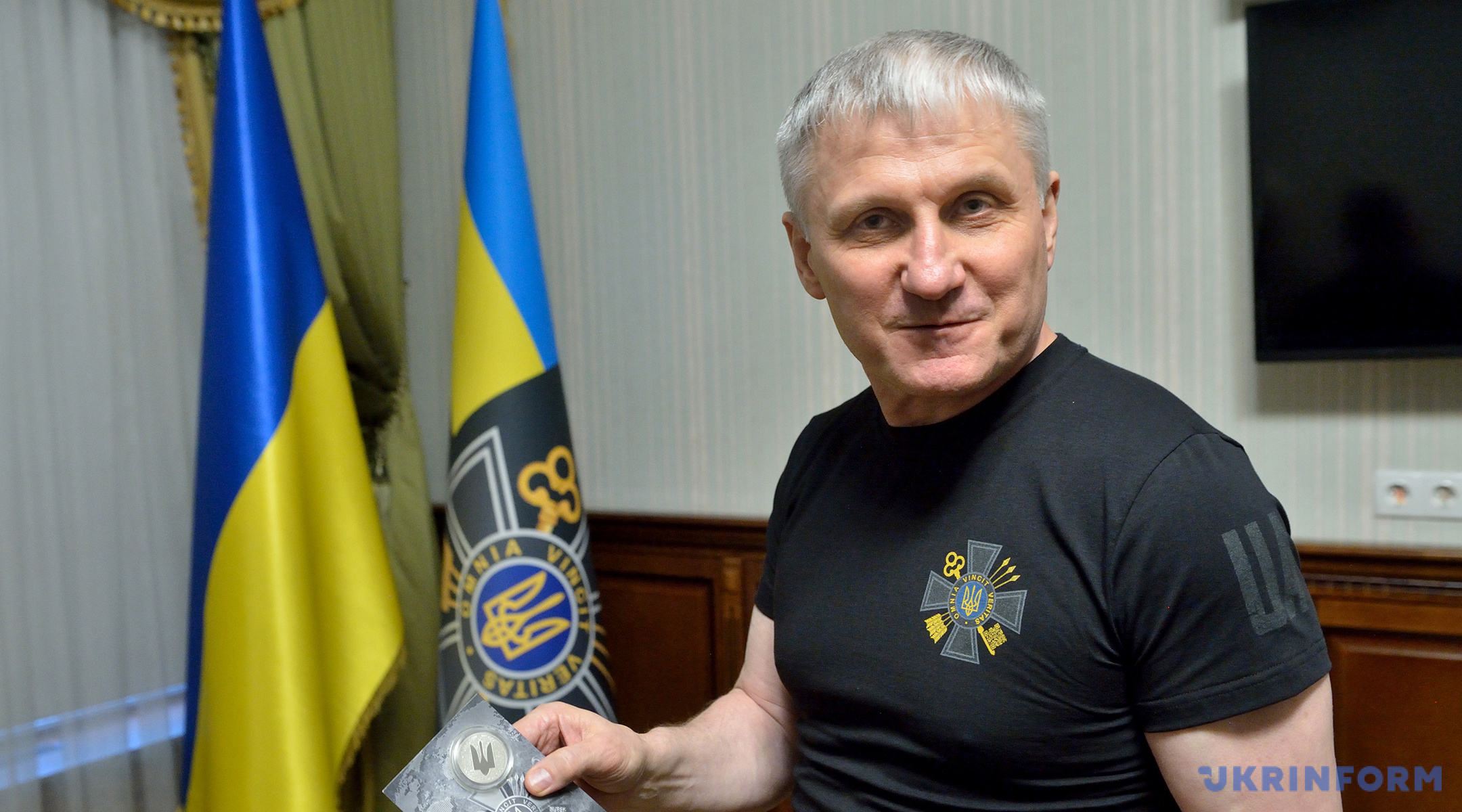
- Would you comment on reports of military engineers expanding military bases in the Russian city of Petrozavodsk, where the Kremlin plans to set up new army headquarters? Beyond this, Russia is building a new railway running along the border with Finland and Norway and south of St. Petersburg to the border with Estonia, which, military analysts say, may indicate its intention to expand its logistics network in preparation for a potential attack on NATO countries...
- Russia is preparing. They are organizing new Leningrad Military District, and this is not about the defense but about the offense. There will be a new operational axis running from the Kola Peninsula to Finland. New military bases are being built along this axis. As regards the new railway, this is part of a plan to expand the infrastructure that could be used both for civilian and military purposes.
– If Russia agrees to put the war on hold, to negotiate peace, what they are going to do with their million-strong army then? Military experts are warning that huge masses of veterans returning from war would be posing a threat of internal destabilization to the Kremlin…
– Russia has no intention of ending this war. In their minds, they are restoring the Soviet Union by the hands of the army. They are organizing new military districts and army divisions, 13 divisions, to be precise. True, they are experiencing problems with the shortage of personnel and equipment. But that said, 1,000–1,200 new recruits sign contracts in each single day. This amount of mobilization is not intended for peace, but is a preparation for something other than peace.
The reason for this is in economy. Currently in that country, the defense-industrial sector is the only industry to show a growth trend. If it stops, the entire Russian economy will go cracked. And this is also in ideology based on fear and enemies all around. For the Kremlin, war is a tool to hold on to power. And this is posing a threat to Ukraine and all of the civilized world.
– What is going on behind the scenes of the government in Russia? Who in Russia’s so-called “Politburo” has the greatest amount of influence on Putin? Who does he heed to?
– As things are now, each and every idea is generated solely by the leader, with others in his inner circle being only the executors. We see that there are things that they don’t dare to tell Putin. We have come to the conclusion that he is not being provided with true information about the state of affairs in the economy and war. Reports are given in a light form, without an emphasis put on possible consequences and implications. That is why decisions are sometimes made that raise eyebrows globally.
– Is a “successor” operation being prepared? Who could replace Putin, potentially?
– This topic is off limit to the top leader’s entourage. They are fearful for their positions, for families and the loved ones. The top leader perhaps has some thoughts, but they are not spelled out, this topic is never raised.
– How do you assess the potential for a protest movement emerging in the Russian Federation?
– A general potential for protest does exist, but it is insignificant, standing at 18-20 percent. We do not see any prerequisites for internal destabilization.
There are dissatisfied people in Russian regions, in the Caucasus, but this dissatisfaction is directed at the regional authorities. There is no such thing as someone criticizing the top leader.
The entire territory of Russia is under a strict regime, saturated with large numbers of FSB agents and Rosgvardia troops, who are doing their job accordingly.
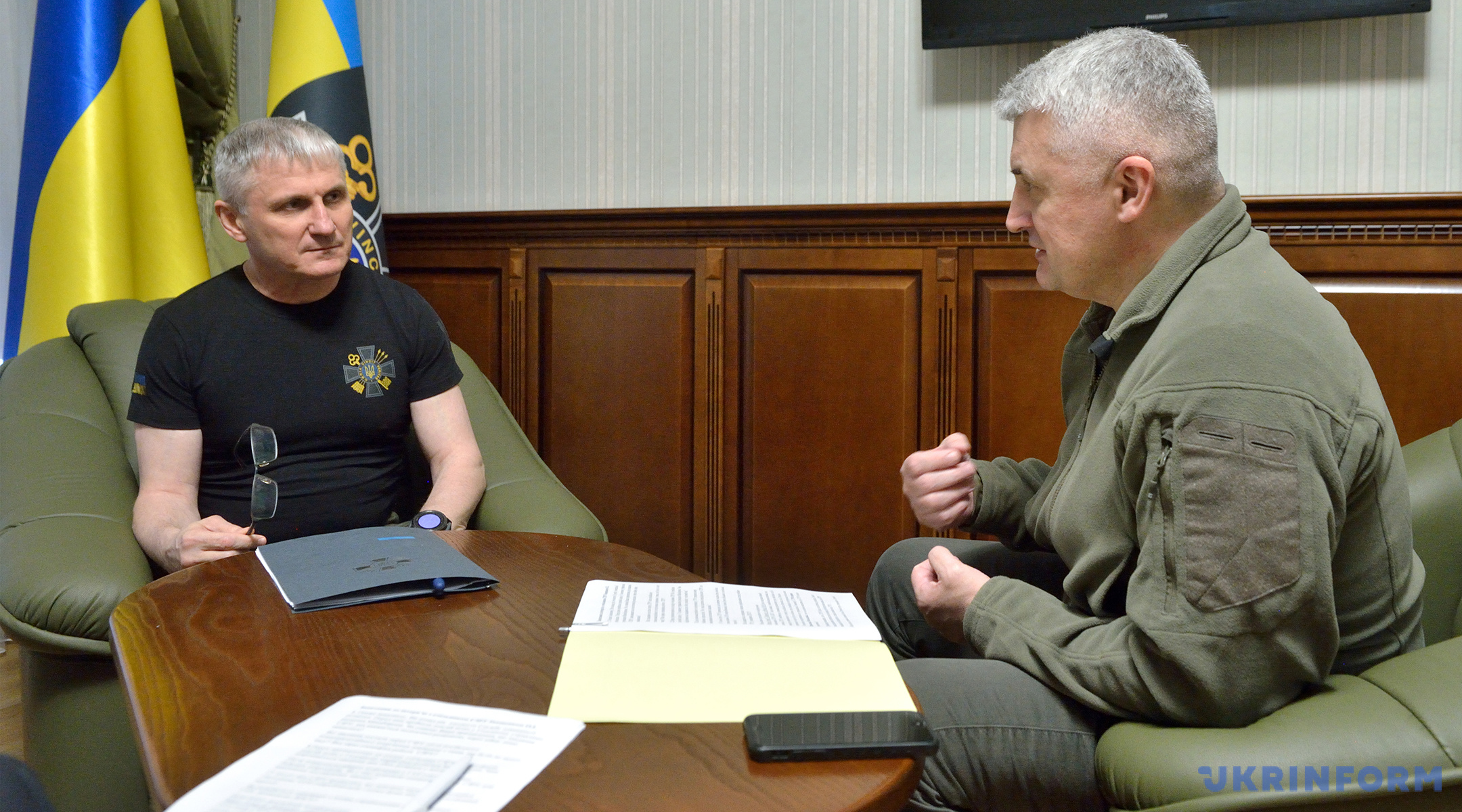
DMITRIEV IS LOBBYING FOR UNFREEZING OF RUSSIAN ASSETS IMMOBILIZED IN WESTERN JURISDICTIONS
– The first round of negotiations between the United States and Russia took place this Spring. What was the maximum goal Russia had set for itself for those negotiations?
- During these negotiations, they come from afar, imposing their own version of history on the other negotiating side. They are telling about what was happening 200-300 years ago, that these lands are Russian historically, thus drawing to a conclusion that everything they claim is theirs, and their cause is right.
Take, for example, Kirill Dmitriev, CEO of the Russian Direct Investment Fund and the Russian president's special representative for economic cooperation with foreign countries, who is lobbying for issues of global commerce. Dmitriev's prime task is to unlock the Russian sovereign assets frozen in foreign jurisdictions worth USD 280 billion – a huge amount of money for them.
Dmitriev is seeking to persuade the U.S. to push the war and peace issues aside and focus instead on a wider perspective. He says: we have the Arctic, we have oil, gas, we have Siberia with its huge resources. You need rare earth minerals? Let's look what we can offer here. And it ultimately turns out that the Ukrainian issue is being washed out, relegated to the background. In this context, our goal is to make it so that the Ukrainian issue is the focus of the agenda.
- Kyrylo Budanov, Ukraine’s defense intelligence chief, told Ukrinform in a recent interview that the Russian Federation, despite its failure in Syria, is expanding its presence in African countries. What strategic goal are they pursuing out there – military, economic? Will it be true to say that Africa is a resource for the Russian Federation?
– For Russia, Africa is about resources and geopolitical influence.
Russia’s private army led by Evgeni Prigozhin deployed its personnel to Africa to extract rare earths, talc ores, gold, and other metals.
In countries such as the Central African Republic, Mali, and Burkina Faso, the main task, in addition to exploring metal deposits, is to keep in power those whom they favor. These are the countries where they are building up their influence.
They currently have 12,000 troops deployed in Africa. The Russians have projections to double this to 24,000 troops, and this is already a small army.
There is another interesting story involving Libya, where Belarusian military personnel have turned up. We are aware that they are engaged in security for air force bases in Tobruk and El-Bayda. There are up to a hundred of them deployed out there, but this is for a reason. The first deliveries of Belarusian equipment, in particular, electronic warfare systems, have already been made.
– According to a report from the anti-disinformation center at the National Security and Defense Council, the Russian Orthodox Church has launched its branches in 30 African countries over the past three years. What is the reason for this activity?
– We are currently more concerned about something else: some part of the 6.5 million Ukrainians who fled the war abroad are coming under the influence of the Russian orthodox church. Russian priests are no longer just priests but also agents. They went to Europe on a mission under the authority of their Foreign Intelligence Service or the Federal Security Service (FSB).
A specific case happened in a North European country. The case is specific in that the government provides local parishioners with money to support their church. And the priest transfers this money to occupied Ukraine, thus supporting our enemies.
– How do you respond to this situation?
– We are working with partners. But it is difficult out there, because this is an area where the law is very subtle. In the church, a priest does not directly tell you to go spying, but he rather suggests. And a person is already under the influence. This is an information weapon. Special services are working there, and we are aware of this. Incidentally, we analyzed this case in detail with that country’s intelligence chief during his visit to Ukraine.
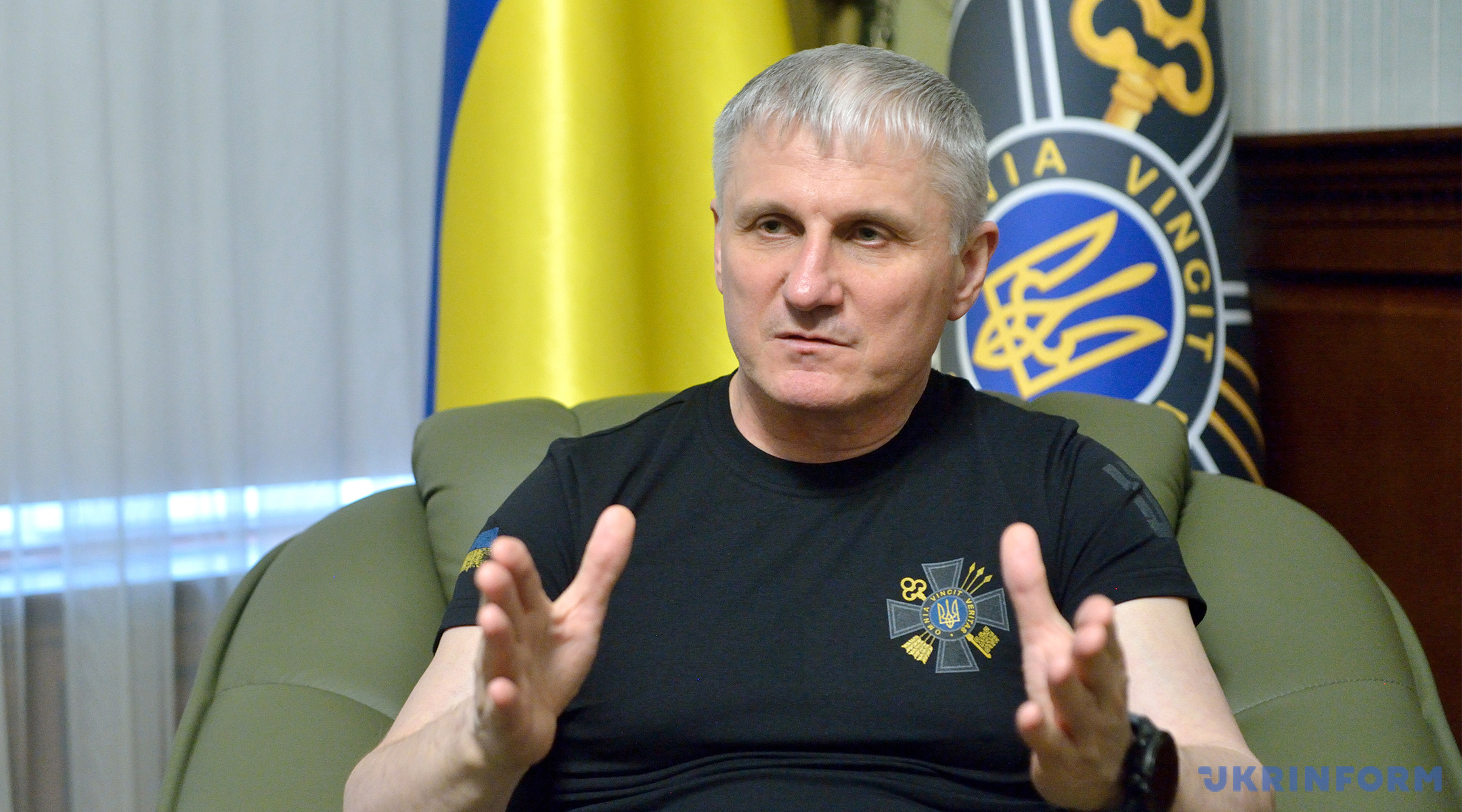
– In other words, our citizens staying abroad can be recruited when in church?
– Absolutely so. People have fled to Poland, Germany, Italy, Montenegro – elsewhere. And there are Russians out there too. Whereas on our territory, citizens in the church are protected by the Security Service from the influence of Russian special services, people who have left for abroad are not protected, they are under the laws of the country they are staying in. And this is a problem, because they can be recruited, influenced, used. They should be careful.
WE ORGANIZED OWN COMBAT UNITS
– After the full-scale invasion began, several combat units have been organized within HUR. Are there similar special units in the structure of FISU to carry out the assigned tasks?
- Over the year under my leadership as FISU chief, we have updated the work of multiple structural units within the Service, ranging from intelligence to technical reconnaissance units. Great changes have taken place within analytical units. And, answering your question, we too have organized some units, which are currently deployed in the war zone.
These are both combat units and technical reconnaissance units. How did that situation arise? I was appointed last year, when a threat arose that the enemy would launch an offensive on a particular direction. So, we sent to the frontline the first four mixed crews of technical reconnaissance, supported by two combat units. This is how our combat history began.
– Do I understand it correctly that the tasks assigned to FISU and HUR have blended in during the war?
– Everything is logical here. The focus is on Russia and those who are assisting it. We have two main directions to focus on. The first is to provide the President of Ukraine with intelligence on Russia's domestic and foreign policies, its plans and intentions, how stable Russia is economically, how short is Russia on cash, what’s the situation like in its defense-industrial sector, and what our enemy's potential for waging war is.
The other direction is to obtain, gather and analyze intelligence in support of our Defense Forces. We must give clear answers as to how many tanks, artillery systems, and rounds of ammunition the enemy manufactures and supplies to its troops on the battlefield. How far does it depend for technologies and components on foreign countries? The supply schemes for critical raw materials and what we can do to thwart the enemy. Here, indeed, the tasks are similar to those being handled by the Main Intelligence Directorate.
We are more focused on foreign and economic intelligence, while the HUR deals with defense intelligence affairs. But today everything has become so tightly intertwined that whoever has more capabilities gets the job done.
– Let's talk about training your personnel. In 2021, the Cabinet of Ministers disbanded the Academy of the Foreign Intelligence Service. Is the educational institution still working, how is the training of personnel for the FISU going?
– I am sometimes approached with questions as to the reason why the Academy of the Foreign Intelligence Service was disbanded and when it will be re-established. I would answer that we will not get it re-established. We have established a separate unit, known as the Center for Professional Development, which is reporting directly to me, we are making certain changes and updates to this unit.
A person comes to serve in the Service already trained with a bachelor's degree, or even better, a master's degree. And where this was preceded by training in a foreign country, then that's great. We want our employees to gain knowledge at top universities in the world. And we facilitate this.
Plus security. The academy was vulnerable to agents. Now we select people, and then follow mentors, training courses, instructors, special psychology, agent and military training. This is a kind of upgrade to the classical system. And this training is already giving results.
– Where do you get people from? One can get into the HUR, for example, through a recruiting center? And how one can get into the FISU?
– It’s difficult. We have a pre-selection system. A person goes through several phases: acquaintance, assignment, observation. We look at how the person thinks and acts. This is a classic for every special service. Now we are updating our team. Younger people are coming – active, smart, proficient in several languages. A new generation of intelligence officers.
